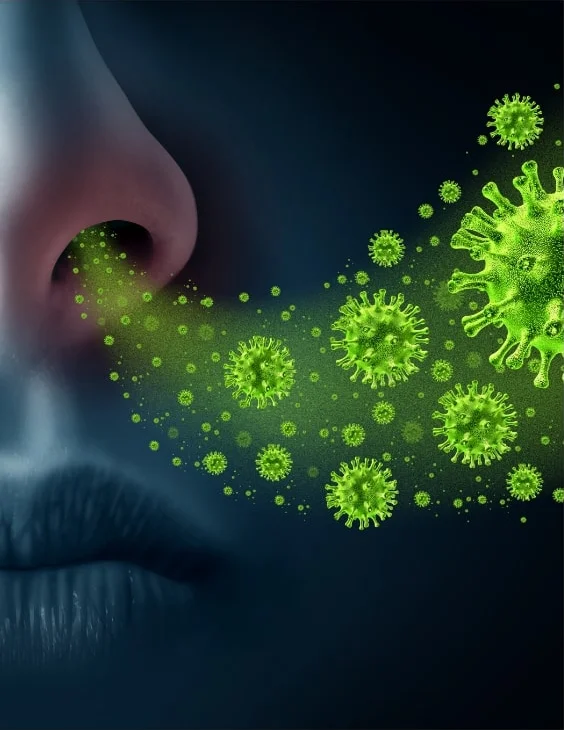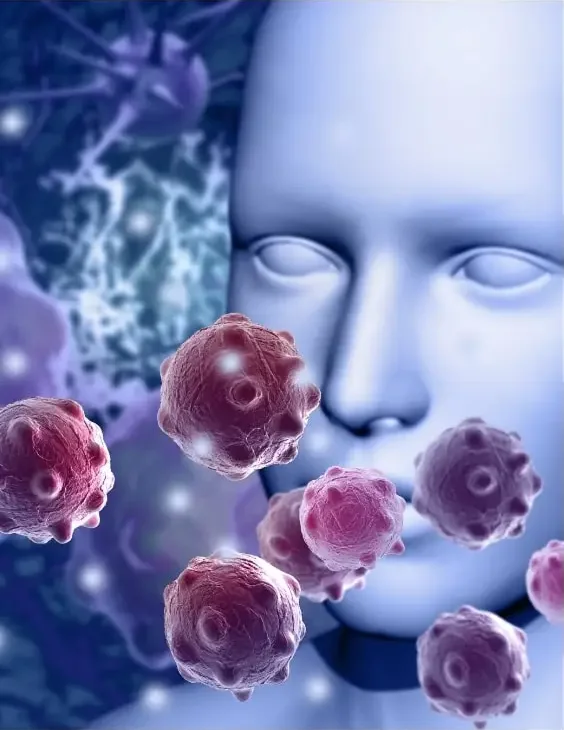An allergen is any substance, including dust, dust mites, food items, pollen, or other materials, that can trigger allergic reactions in the body. Allergies occur when the body is exposed to external substances that should not be harmful. The body responds by attempting to fight and eliminate foreign particles, leading to an allergic reaction.
Out of several allergens present in the environment, dust & dust mites most commonly affect people. They cause allergic reactions in the respiratory tract and eyes. They cause typical allergic reactions such as repeated sneezing, coughing, and runny nose. Also, headaches due to the irritation of sneezing and more.
Also Read: Cycling Road Rash Care
Dust Mites and Their Abundance in the Environment:
Dust mites are microscopic bugs that cannot be seen with the naked eye. They live in dust and easily accumulate in our surroundings, including our homes, as they feed on the dust and dead skin cells shed by humans. These tiny bugs also leave behind remnants of their feces, which can trigger allergic reactions in many people.
Dust mites thrive in warm environments and can rapidly multiply in homes without people even realizing it. This can lead to allergic reactions in individuals who are sensitive to them, as their presence and growth in the surrounding environment can trigger such reactions.
It is important to take precautions to eliminate dust mites and seek treatment for allergic reactions to them. Long-term exposure to dust mites can lead to asthma and sinus infections in some individuals.
Spaces Inside Home Where Dust Mites Breed Easily
Dust mites can easily grow and multiply in certain areas of the home, such as carpeting, bedding, cushions, or any object that holds dust particles. Humidity is a significant factor that contributes to the growth of dust mites, as they thrive in such environments and can quickly spread to beds and furniture.
Symptoms of Dust Mite Allergy
Dust mite allergy symptoms are similar to those of dust allergy and primarily affect the respiratory tract. Common symptoms of dust mite allergy include:
- Runny nose
- Repeated sneezing
- Scratchy throat
- Coughing
- Red, tearing eyes
- Post-nasal drip
- Congestion
Individuals with asthma who also have a dust mite allergy may experience the following symptoms:
- Asthma attacks
- Wheezing
- Chest pain or tightness in the chest
- Difficulty speaking.
Diagnosis of Dust Mite Allergy
Allergy diagnosis tests can determine if someone has a dust mite allergy or other allergies. It is crucial to inform the doctor about all symptoms, as they can be common to cold and flu-like conditions. Providing complete information to the doctor is necessary for accurate diagnosis and effective treatment.
There are different methods for diagnosing dust mite allergy, including:
Skin-Prick Test: A small amount of the allergen is injected into a specific area, and the doctor waits for 15 minutes to check for any reactions. If a reaction occurs, it indicates an allergy to a specific allergen..
Blood Test: Blood tests are used for individuals with skin conditions that prevent the skin prick test from being performed or those taking medications that may interfere with the allergy showing up. The blood test looks for the presence of antibodies in the body. When the immune system reacts to an allergen, it releases antibodies to combat those allergens, leading the body to overreact and produce histamines that mimic allergy symptoms.
In addition, the doctor will inquire about the individual's medical and family history and symptoms to diagnose dust mite allergy. Diagnosing dust mite allergy can be challenging since it is prevalent, and pets can carry numerous dust mites in them, making it harder to identify the allergen.
Also Read: When to Go to the ER for High Blood Pressure?
Treatment and Medication For Dust Mite Allergy
There are various treatments available for allergies, including over-the-counter medications, immunotherapy, and nasal irrigation. Immunotherapy involves receiving allergy shots repeatedly to desensitize the immune system to the allergen. Nasal irrigation, on the other hand, involves cleaning nasal passages using a spray or homemade saline solution.
Some common medications used in the treatment of dust mite allergies are:
- Antihistamines
- Decongestants
- Corticosteroids
Prevention is the Best Medicine
If you're dealing with dust and dust mite allergies, there are several steps you can take to manage the issue. While the best treatment for allergies is usually to avoid the allergens as much as possible, there are some proactive steps you can take to minimize the presence of dust mites in your home. Here's a list of actions you can take:
- Change your Bedding Weekly: Regularly cleaning and washing your bedding will eliminate breeding spaces for dust and dust mites. It's also beneficial for your skin and hair. Your bedding accumulates dead skin cells, so it's important to wash them routinely. Consider using allergy-proof covers for your bed as well.
- Vacuum your Carpets and Curtains: Carpets and curtains can be cozy places for dust mites. Vacuum cleaning your carpeting is important, and it's also a good idea to give your larger carpets a monthly wash. Don't forget to vacuum your curtains too.
- Use a Dehumidifier: Dust mites thrive in humid environments, so using a dehumidifier can help keep moisture levels at bay.
- Dust your home: To keep dust at bay, use a damp towel or mop to clean surfaces. It's best to make sure that dust is not getting accumulated, and use a vacuum cleaner to get all the dust. Remember to pay extra attention to curtains, furniture crooks, and cushions.
- Choose Washable Stuffed Toys: If you or your family members have stuffed toys, choose ones that are easily washable and keep them off the bed.
- Keep Clutter at Bay: It's easy for clutter to accumulate in your home, but unfortunately, it can also lead to the accumulation of dust. To prevent this, cut the clutter and keep spaces easy to clean and breathable.
By taking these simple steps, you can minimize the presence of dust mites in your home and alleviate your allergy symptoms.
Also Read: 6 Crucial Tips To Follow For Better Sleep At Night
Keep Your Allergies at Bay
To prevent the development of asthma, particularly in children, it's crucial to avoid continued exposure to allergens. It's recommended to take extra precautions to keep your allergies under control. Additionally, it's essential to have medications on hand in case of a reaction.








%20(1).png)
.png)
%20(1).png)


%20(1).png)




%201.png)
